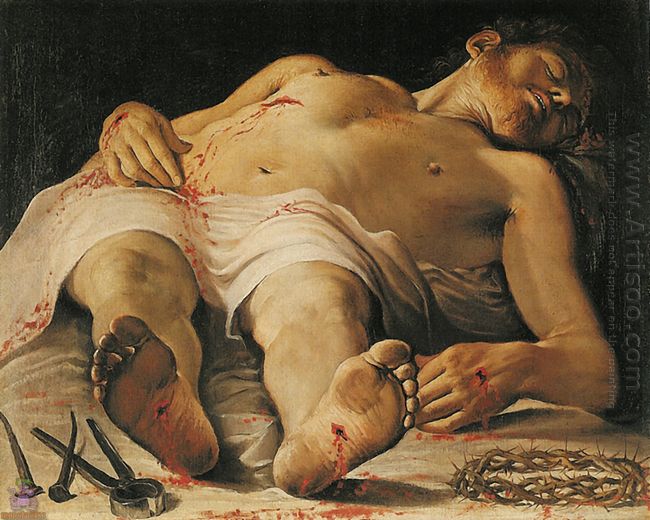Mantegna had a masterpiece Dead Christ (or The mourning of Christ), was made in
of Christ was often a thought-provoking question. Mantegna intended to let the audience notice the painful wounds of Christ. Sculpture-like body made the body with a high stereo feeling. Perspective effects made the body, hands and feet beyond the frame of the trauma and grasp the viewer’s heart deeply. No matter in what position the viewer placed in the gallery, his eyes were not immune to the feet and wound. Someone once said that the head was too big, and the foot was too small. In fact, this was due to the use of one eye cast sight caused by. So paint only on a flat surface. Just look at the position of the object with one eye, then you could know the perspective and the proportion of Mantegna is correct.

This painting was the painter’s masterpiece, which was an altarpiece. He used the perspective angle which was never used by the former people in the painting and tried to be accurate and true to show the dead Christ’s body. The lines were very sharp and hard. The screen’s characters looked calm, solemn and daunting. The superb art of the painter reflected the tendency of northern Italian art at that time: emphasizing human dignity and heroic spirit, paying attention to the art and science of combining realistic spirit, advocating the artistic description object should be based on the physical basis. This completely accurately reproduced the natural realism tendency of realism art; Italy’s growth had played a certain positive role. Mantegna loved relationship perspective to depict the object from a different angle. He chose the most difficult perspective shortened and accurately plane figures showed the perspective. The most difficult was indeed the Dead Christ with a positive vertical transmission in the painting. The painter did not deliberately focus on the mourning of Christ and tried to draw the human relationship with the X-ray morphology planar, which the painting of people tried to avoid painting artist and visible as a perspective of research.
There was another version of this painting, which did not have the mourners on the left. Some art historians believed that the mourners may be later added by Mantegna’s students. Without them, the painting will possess deeper and more solemn sense. However, although the two mourners looked clumsy, the painting was still a profound description of the scene from time immemorial tragedy. Its harsh lines were like metal, cutting the screen, with its troublesome side expressed the theme of the tortured heart emotion. This was the American writer Hemingway said “Mantegna’s Christ suffering nails eyes”.